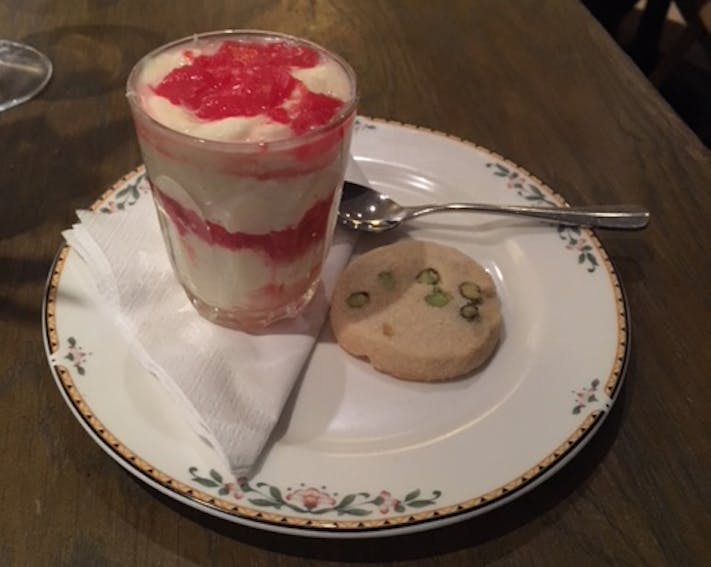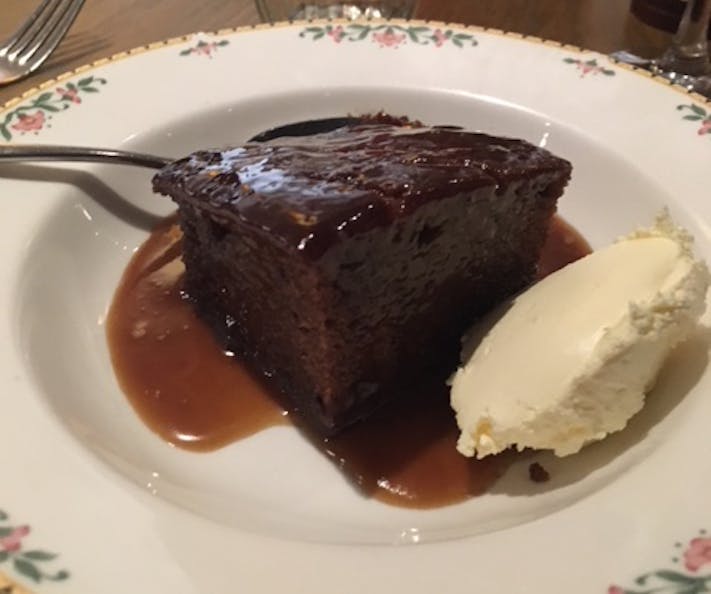Stepping into Ashmolean’s rooftop restaurant, you feel immediately refreshed. Before you stands an open, high-ceilinged space, airy and sleek with white marble. A wall of glass doors separates the in and outdoor areas. The view looks out onto the Randolph Hotel across the street, which sounds off-puttingly commercial, but because it’s a glamorous, vast stone building, in reality, it feels rather fitting. It also creates a sense of elevated privacy, which, along with the polite and thoughtful menu, and accompanying service, create the perfect backdrop to conversation. There’s an expectation of quality and flair, but no acquired tastes here.
Some restaurants, (exclusively expensive ones,) pride themselves on being just a little bit difficult. You’re not to visit them as simply the scenery for your latest catch-up, you must go to experience the restaurant itself. Ashmolean has wisely dodged this philosophy, likely recognizing that the sheer range of clientele their restaurant will serve means they need to be as broadly appealing as possible. This is a tall order. The museum attracts tourists, local members, curious students, retirees, and mum and baby groups alike. Some will book a rooftop dinner for a special occasion, and others will simply realise they are starving nearing the end of their tour and simply give it a whirl.
I was here with my colleague to sample the new Grecian-themed menu items, inspired by the museum’s major new exhibition Labyrinth: Knossos, Myth and Reality, which is on until June 30th (you can read our review of Labyrinth here).
We started our lunch with glasses of Belstar Prosecco (£7.50 for a standard 125ml flute) which tasted as subtle and starry as prosecco should.
I then ordered the Lamb Koftas (£8.50) and my colleague the Spinach and Feta Muffin (£7.50) from the Starters menu and split the Sharing Board (£9.50) from the nibbles. The sharing board consisted of two sliced pitta breads, taramasalata, and roasted red pepper hummus. The dips were piped into two aesthetic little mounds on either side of the wooden serving board, and studded with pine nuts and microgreens. The combination of the two flavours was inspired - the stable, warm taste and ever so slightly gritty texture of the hummus balanced out the unctuous richness and sharp aftertaste of the taramasalata.

The lamb koftas came garnished with a wedge of little gem lettuce, quartered vertically to form an ombre green spear, two grilled pitta wedges, and a generous dollop of raita. The pair of koftas were perfectly seasoned if ever-so-slightly dry in this instance. The raita, a cooling mix of yoghurt, dill and cucumber, tasted as fresh as a spring morning. Although I was slightly bewildered by the textural choice to slice the cucumber into long, skinny threads, it was not enough to sully the dish.


Turning our attention back to the specifically Knossos-themed items: there’s a smooth, friendly feel to these choices, which extends to the accompanying themed cocktail - the fresh-tasting, easy-drinking Labyrinth Highball (£8). Like the lovechild of a Moscow Mule and a G&T, this uses the Greek liqueur Mastika and ginger ale among other ingredients and is garnished with both orange and cucumber.


It’s worth noting as well, the service was truly exceptional, and attentive but not cloying - bringing us more bread, and topping up our water. Donning black turtlenecks and jeans, the almost cartoonishly chic staff felt both friendly and knowledgeable.
Ultimately, the restaurant provided a lovely afternoon of escapism, the perfect cocktail of style and subtlety, and I look forward to returning again soon.




 Part of
Part of 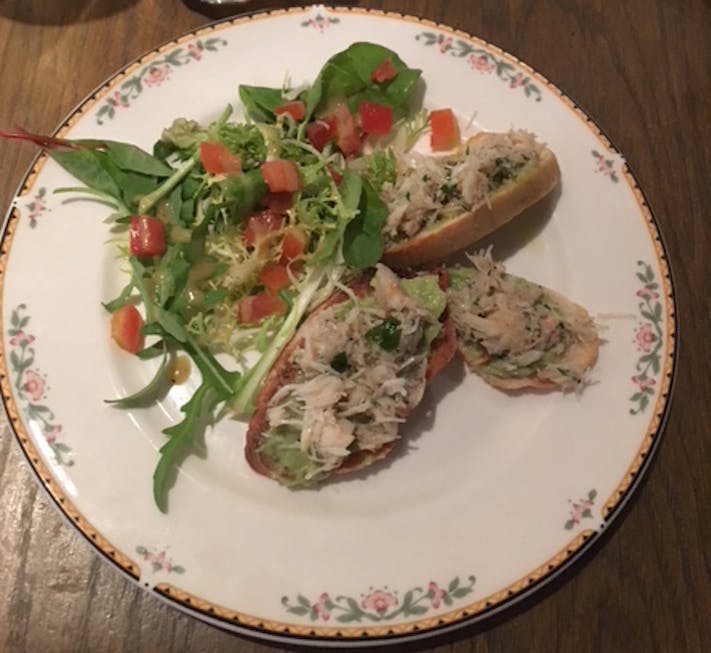
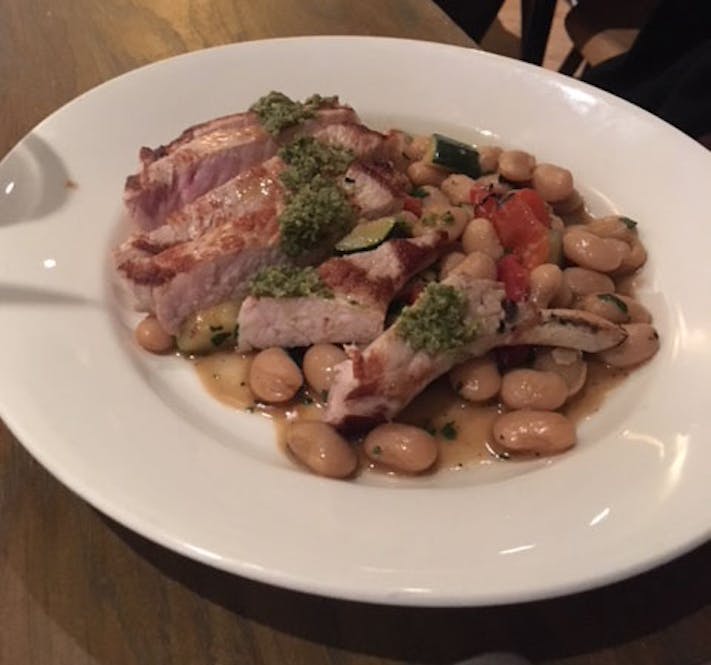
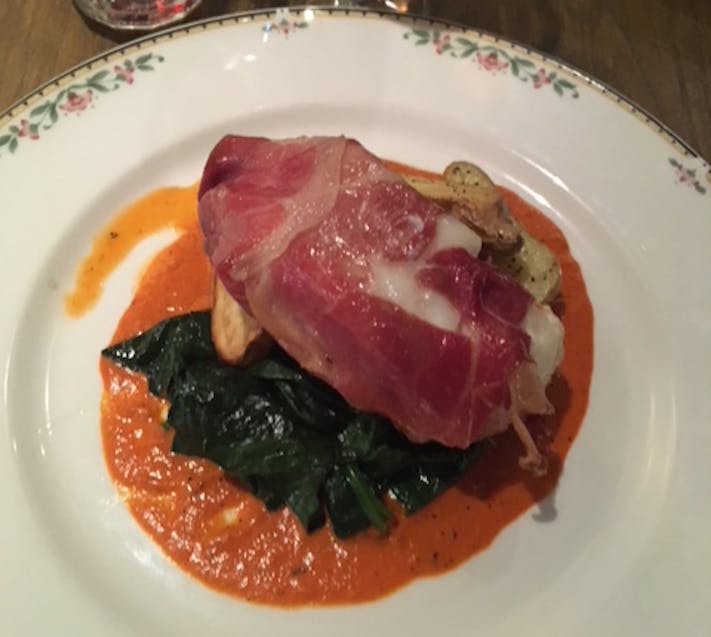 (gracefully and very speedily added without fuss), was just gorgeous. A sweet, satisfying combination of pork and pulses which was simultaneously indulgent and nutritious, beautifully matched with unnecessary chips to soak up the rich sauce. Katy said that her cod saltimbocca was nicest piece of fish she’d ever had – very lightly cooked and so still perfectly tender, wrapped in wonderfully salty prosciutto and pepped-up with Catalan romesco sauce.
(gracefully and very speedily added without fuss), was just gorgeous. A sweet, satisfying combination of pork and pulses which was simultaneously indulgent and nutritious, beautifully matched with unnecessary chips to soak up the rich sauce. Katy said that her cod saltimbocca was nicest piece of fish she’d ever had – very lightly cooked and so still perfectly tender, wrapped in wonderfully salty prosciutto and pepped-up with Catalan romesco sauce.
